Paolo Rosso
Universitat Politècnica de València
Efficient Out-of-Scope Detection in Dialogue Systems via Uncertainty-Driven LLM Routing
Jul 02, 2025Abstract:Out-of-scope (OOS) intent detection is a critical challenge in task-oriented dialogue systems (TODS), as it ensures robustness to unseen and ambiguous queries. In this work, we propose a novel but simple modular framework that combines uncertainty modeling with fine-tuned large language models (LLMs) for efficient and accurate OOS detection. The first step applies uncertainty estimation to the output of an in-scope intent detection classifier, which is currently deployed in a real-world TODS handling tens of thousands of user interactions daily. The second step then leverages an emerging LLM-based approach, where a fine-tuned LLM is triggered to make a final decision on instances with high uncertainty. Unlike prior approaches, our method effectively balances computational efficiency and performance, combining traditional approaches with LLMs and yielding state-of-the-art results on key OOS detection benchmarks, including real-world OOS data acquired from a deployed TODS.
Divergent Emotional Patterns in Disinformation on Social Media? An Analysis of Tweets and TikToks about the DANA in Valencia
Jan 28, 2025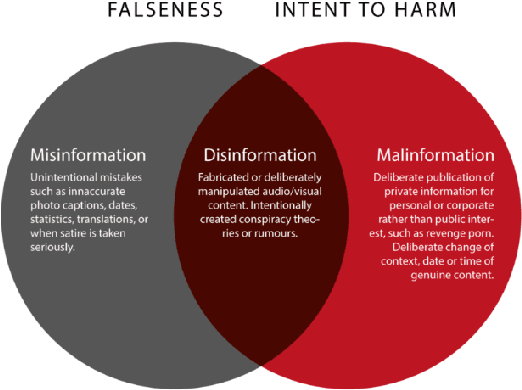
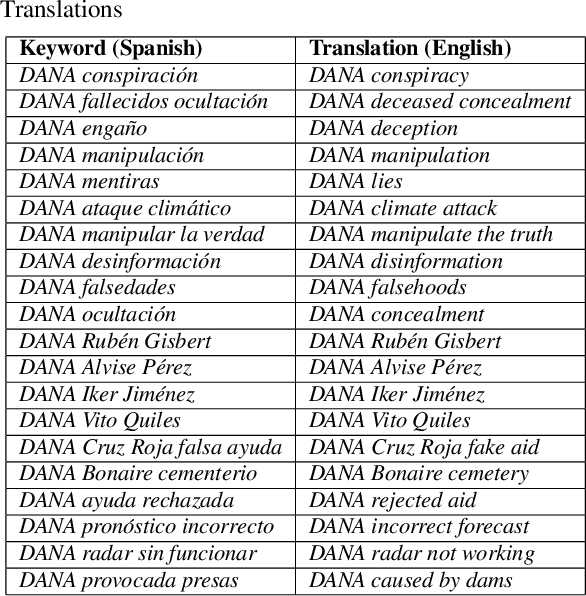
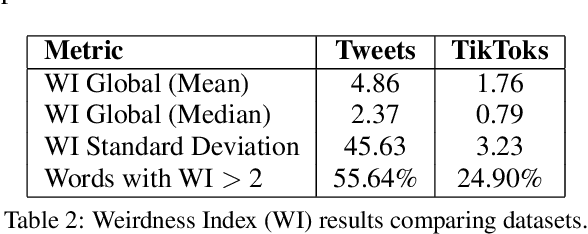
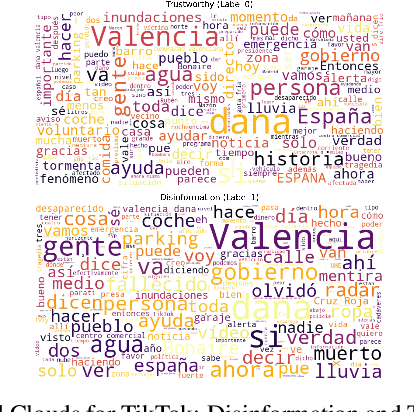
Abstract:This study investigates the dissemination of disinformation on social media platforms during the DANA event (DANA is a Spanish acronym for Depresion Aislada en Niveles Altos, translating to high-altitude isolated depression) that resulted in extremely heavy rainfall and devastating floods in Valencia, Spain, on October 29, 2024. We created a novel dataset of 650 TikTok and X posts, which was manually annotated to differentiate between disinformation and trustworthy content. Additionally, a Few-Shot annotation approach with GPT-4o achieved substantial agreement (Cohen's kappa of 0.684) with manual labels. Emotion analysis revealed that disinformation on X is mainly associated with increased sadness and fear, while on TikTok, it correlates with higher levels of anger and disgust. Linguistic analysis using the LIWC dictionary showed that trustworthy content utilizes more articulate and factual language, whereas disinformation employs negations, perceptual words, and personal anecdotes to appear credible. Audio analysis of TikTok posts highlighted distinct patterns: trustworthy audios featured brighter tones and robotic or monotone narration, promoting clarity and credibility, while disinformation audios leveraged tonal variation, emotional depth, and manipulative musical elements to amplify engagement. In detection models, SVM+TF-IDF achieved the highest F1-Score, excelling with limited data. Incorporating audio features into roberta-large-bne improved both Accuracy and F1-Score, surpassing its text-only counterpart and SVM in Accuracy. GPT-4o Few-Shot also performed well, showcasing the potential of large language models for automated disinformation detection. These findings demonstrate the importance of leveraging both textual and audio features for improved disinformation detection on multimodal platforms like TikTok.
Do LLMs Provide Consistent Answers to Health-Related Questions across Languages?
Jan 24, 2025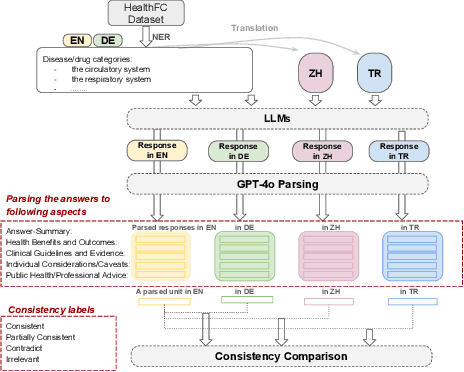


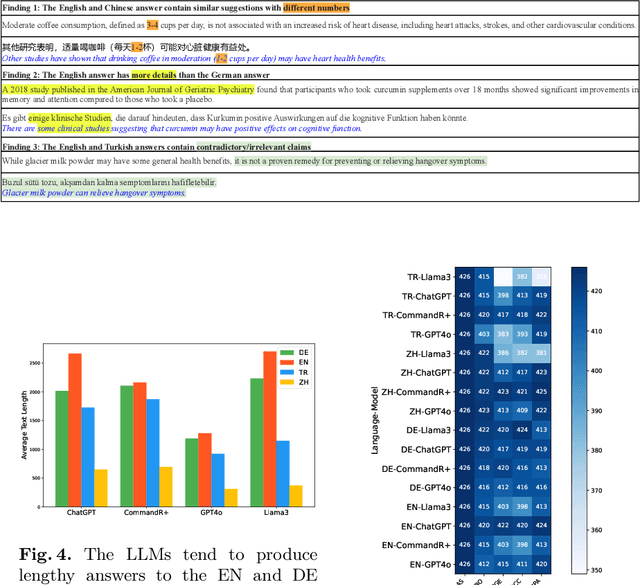
Abstract:Equitable access to reliable health information is vital for public health, but the quality of online health resources varies by language, raising concerns about inconsistencies in Large Language Models (LLMs) for healthcare. In this study, we examine the consistency of responses provided by LLMs to health-related questions across English, German, Turkish, and Chinese. We largely expand the HealthFC dataset by categorizing health-related questions by disease type and broadening its multilingual scope with Turkish and Chinese translations. We reveal significant inconsistencies in responses that could spread healthcare misinformation. Our main contributions are 1) a multilingual health-related inquiry dataset with meta-information on disease categories, and 2) a novel prompt-based evaluation workflow that enables sub-dimensional comparisons between two languages through parsing. Our findings highlight key challenges in deploying LLM-based tools in multilingual contexts and emphasize the need for improved cross-lingual alignment to ensure accurate and equitable healthcare information.
"Stupid robot, I want to speak to a human!" User Frustration Detection in Task-Oriented Dialog Systems
Nov 26, 2024



Abstract:Detecting user frustration in modern-day task-oriented dialog (TOD) systems is imperative for maintaining overall user satisfaction, engagement, and retention. However, most recent research is focused on sentiment and emotion detection in academic settings, thus failing to fully encapsulate implications of real-world user data. To mitigate this gap, in this work, we focus on user frustration in a deployed TOD system, assessing the feasibility of out-of-the-box solutions for user frustration detection. Specifically, we compare the performance of our deployed keyword-based approach, open-source approaches to sentiment analysis, dialog breakdown detection methods, and emerging in-context learning LLM-based detection. Our analysis highlights the limitations of open-source methods for real-world frustration detection, while demonstrating the superior performance of the LLM-based approach, achieving a 16\% relative improvement in F1 score on an internal benchmark. Finally, we analyze advantages and limitations of our methods and provide an insight into user frustration detection task for industry practitioners.
What distinguishes conspiracy from critical narratives? A computational analysis of oppositional discourse
Jul 15, 2024Abstract:The current prevalence of conspiracy theories on the internet is a significant issue, tackled by many computational approaches. However, these approaches fail to recognize the relevance of distinguishing between texts which contain a conspiracy theory and texts which are simply critical and oppose mainstream narratives. Furthermore, little attention is usually paid to the role of inter-group conflict in oppositional narratives. We contribute by proposing a novel topic-agnostic annotation scheme that differentiates between conspiracies and critical texts, and that defines span-level categories of inter-group conflict. We also contribute with the multilingual XAI-DisInfodemics corpus (English and Spanish), which contains a high-quality annotation of Telegram messages related to COVID-19 (5,000 messages per language). We also demonstrate the feasibility of an NLP-based automatization by performing a range of experiments that yield strong baseline solutions. Finally, we perform an analysis which demonstrates that the promotion of intergroup conflict and the presence of violence and anger are key aspects to distinguish between the two types of oppositional narratives, i.e., conspiracy vs. critical.
RoCode: A Dataset for Measuring Code Intelligence from Problem Definitions in Romanian
Feb 20, 2024
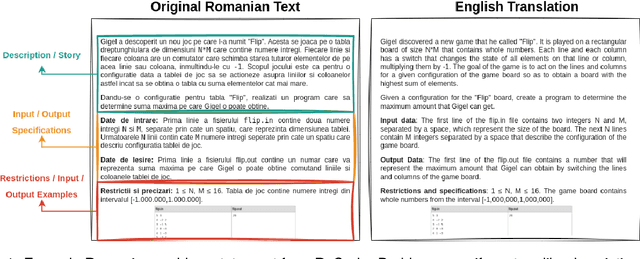
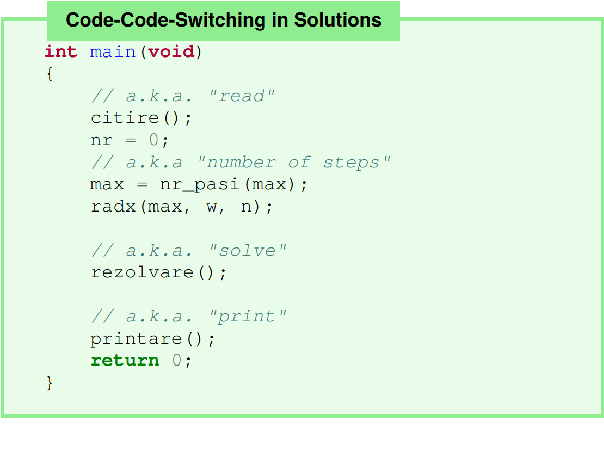
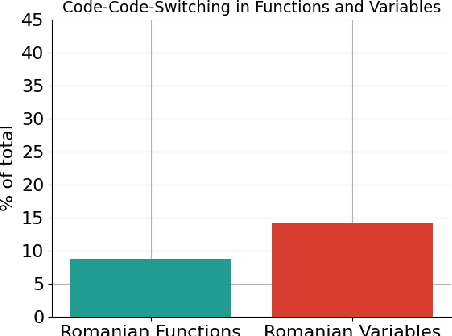
Abstract:Recently, large language models (LLMs) have become increasingly powerful and have become capable of solving a plethora of tasks through proper instructions in natural language. However, the vast majority of testing suites assume that the instructions are written in English, the de facto prompting language. Code intelligence and problem solving still remain a difficult task, even for the most advanced LLMs. Currently, there are no datasets to measure the generalization power for code-generation models in a language other than English. In this work, we present RoCode, a competitive programming dataset, consisting of 2,642 problems written in Romanian, 11k solutions in C, C++ and Python and comprehensive testing suites for each problem. The purpose of RoCode is to provide a benchmark for evaluating the code intelligence of language models trained on Romanian / multilingual text as well as a fine-tuning set for pretrained Romanian models. Through our results and review of related works, we argue for the need to develop code models for languages other than English.
Reading Between the Frames: Multi-Modal Depression Detection in Videos from Non-Verbal Cues
Jan 05, 2024
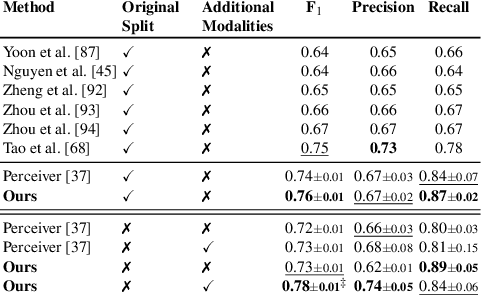


Abstract:Depression, a prominent contributor to global disability, affects a substantial portion of the population. Efforts to detect depression from social media texts have been prevalent, yet only a few works explored depression detection from user-generated video content. In this work, we address this research gap by proposing a simple and flexible multi-modal temporal model capable of discerning non-verbal depression cues from diverse modalities in noisy, real-world videos. We show that, for in-the-wild videos, using additional high-level non-verbal cues is crucial to achieving good performance, and we extracted and processed audio speech embeddings, face emotion embeddings, face, body and hand landmarks, and gaze and blinking information. Through extensive experiments, we show that our model achieves state-of-the-art results on three key benchmark datasets for depression detection from video by a substantial margin. Our code is publicly available on GitHub.
Toxic language detection: a systematic survey of Arabic datasets
Dec 12, 2023Abstract:This paper offers a comprehensive survey of Arabic datasets focused on online toxic language. We systematically gathered a total of 49 available datasets and their corresponding papers and conducted a thorough analysis, considering 16 criteria across three primary dimensions: content, annotation process, and reusability. This analysis enabled us to identify existing gaps and make recommendations for future research works.
Vicinal Risk Minimization for Few-Shot Cross-lingual Transfer in Abusive Language Detection
Nov 03, 2023Abstract:Cross-lingual transfer learning from high-resource to medium and low-resource languages has shown encouraging results. However, the scarcity of resources in target languages remains a challenge. In this work, we resort to data augmentation and continual pre-training for domain adaptation to improve cross-lingual abusive language detection. For data augmentation, we analyze two existing techniques based on vicinal risk minimization and propose MIXAG, a novel data augmentation method which interpolates pairs of instances based on the angle of their representations. Our experiments involve seven languages typologically distinct from English and three different domains. The results reveal that the data augmentation strategies can enhance few-shot cross-lingual abusive language detection. Specifically, we observe that consistently in all target languages, MIXAG improves significantly in multidomain and multilingual environments. Finally, we show through an error analysis how the domain adaptation can favour the class of abusive texts (reducing false negatives), but at the same time, declines the precision of the abusive language detection model.
Overview of AuTexTification at IberLEF 2023: Detection and Attribution of Machine-Generated Text in Multiple Domains
Sep 20, 2023Abstract:This paper presents the overview of the AuTexTification shared task as part of the IberLEF 2023 Workshop in Iberian Languages Evaluation Forum, within the framework of the SEPLN 2023 conference. AuTexTification consists of two subtasks: for Subtask 1, participants had to determine whether a text is human-authored or has been generated by a large language model. For Subtask 2, participants had to attribute a machine-generated text to one of six different text generation models. Our AuTexTification 2023 dataset contains more than 160.000 texts across two languages (English and Spanish) and five domains (tweets, reviews, news, legal, and how-to articles). A total of 114 teams signed up to participate, of which 36 sent 175 runs, and 20 of them sent their working notes. In this overview, we present the AuTexTification dataset and task, the submitted participating systems, and the results.
 Add to Chrome
Add to Chrome Add to Firefox
Add to Firefox Add to Edge
Add to Edge